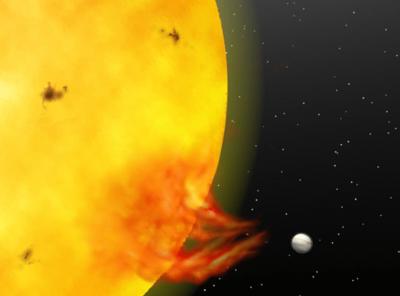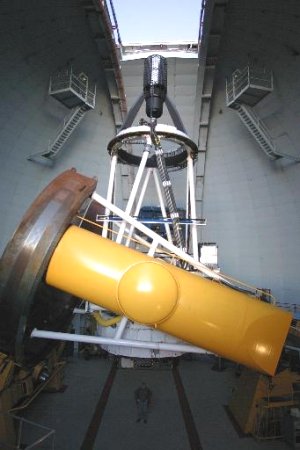Key Takeaways:
The study of planets circling distant stars is scarcely more than a decade old — the fantastic assumption that planetary systems exist outside our own was first confirmed in 1991 — and already it is making exciting progress. Over 110 extrasolar planets have been detected so far. Now, a team of Canadian astronomers has found that one such planet actually is heating its parent star and leaving a telltale imprint of its travels. The finding bolsters astronomers’ theoretical understanding of planetary formation and offers a new method of detecting elusive yet intriguing worlds that dance unseen in the sky.
Astronomers Evgenya Shkolnik and Gordon Walker of the University of British Columbia and David Bohlender of the National Research Council of Canada/Herzberg Institute for Astrophysics used the 3.6-meter Canada-France-Hawaii Telescope in Hawaii to study the light streaming from star HD179949, a star much like our Sun but situated roughly 90 light-years away. In 2000, observers discovered a large planet nearly the size of Jupiter closely orbiting the star. Traveling 350,000 miles per hour, the planet laps the star every 3.09 days.
The team noticed that a bright spot on the outer gaseous layer of the star seemed to glide across its surface, keeping pace with the giant planet’s orbit but staying just a few steps ahead. After tracing the path of this hot spot for over a year — for more than a hundred orbits — the astronomers confirmed that, indeed, its movement is tightly correlated with the planet’s cycle.
Astronomers believe all planets are surrounded by magnetic fields captured from interstellar space during each planet’s formation and sustained by the rotation of its fluid metal interior. The spin of Earth’s iron and nickel inner core within the liquid outer core, for example, creates a powerful magnetic field capable of defending us from the Sun’s violent storms and showers of electrically charged particles.
The existence of this extrasolar planet’s magnetic armor, therefore, provides clues to the composition of the planet’s core and may help account for the planet’s very formation and survival. “The magnetic shielding could well have protected the planet from total ablation by the ionic wind from the parent star,” Walker explains.
Now that scientists know large planets that orbit close to their stars can produce detectable star-spots, they are privy to a new method of hunting for planets that might otherwise go unnoticed. “The detection of periodic hot spots might point to the presence of smaller magnetized planets around other stars,” says Walker. As stars shine helpful hints our way, the search for far-off worlds continues.











